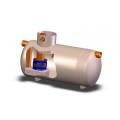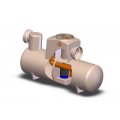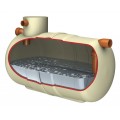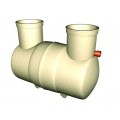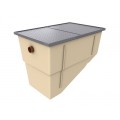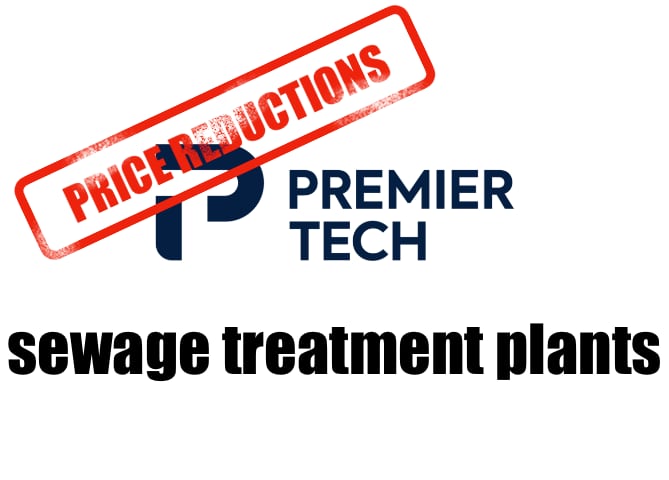Brand: Turtle Enviro
Model: FNS2110
FOGI Single Stage 680L for Fats, Oils & GreasesThe FOGI Grease interceptor/separator range has been designed to conform to both Building Regulations Part H and also BSEN 1825 the British Standard for Grease Separators/Interceptors. The FOGI’s design will effectively intercept (FOGS) fats, oils a..
£978.00
Ex Tax:£815.00
Brand: Clearwater
Model: FS010
Forecourt Separator 10,000 LtrClass 1 and 2Forecourt separators are full retention separators specified to retain on site the maximum spillage likely to occur on a petrol filling station. They are required for both safety and environmental reasons and will treat spillages occurring during vehicl..
£3,870.00
Ex Tax:£3,225.00
Brand: Clearwater
Model: 017020
The Darcy separator Oil alarm is powered by mains & is supplied with a control unit and an Oil Conductivity probe.You can monitor up to 3 probe units and the outlet relay enables the status of each unit to be signalled to a remote location of your choosing. The alarm can be installed up to 300m ..
£414.00
Ex Tax:£345.00
Brand: Clearwater
Model: NSBP003
NSBP003 Bypass Oil Separator 1670 m2Features:
Light and easy to install.
Class I and Class II designs.
Inclusive of silt storage volume.
Fitted inlet/outlet connectors.
Oil alarm system available.
Vent points within necks.
Exten..
£1,141.20 £1,182.00
Ex Tax:£951.00
Brand: Clearwater
Model: NSFP003
NSFP003 Full Retention Separator 170 m2 CoverageFeatures:Light and easy to install.Class I and Class II designs.3-30 l/sec range independently tested and performance sampled, certified by the BSI.Inclusive of silt storage volume. Fitted inlet/outlet connectors.Oil alarm system availabl..
£1,116.00 £1,218.00
Ex Tax:£930.00
Brand: Clearwater
Model: NSG04
NSG04 Grease Separator 2000LBenefits:
Greatly reduces incidents of blocked drains from catering
establishments.
Improves the performance of septic tanks and field drains.
Prevents contamination of small sewage treatment plants.
..
£2,994.00
Ex Tax:£2,495.00
Brand: PREMIERTECH
Model: CNSB3S/21
Rewatec bypass separator CNSB3S/21 1,667m2 Area DrainedThe Rewatec bypass separators have been meticulously designed to effectively manage all rainwater runoff resulting from rainfall rates of up to 6.5mm/hr.These separators come into play in situations where it is deemed an acceptable risk not to p..
£1,152.00
Ex Tax:£960.00
Brand: PREMIERTECH
Model: Rewatec CNS4
Rewatec full retention separator CNS4 222m2 Coverage"The Premier Tech range of Rewatec Full Retention Separators are designed to treat the full flow that can be delivered by a drainage system, which is normally equivalent to the flow generated by a rainfall intensity of 65 mm/hr. Full Rete..
£1,394.40
Ex Tax:£1,162.00
Brand: PREMIERTECH
Model: CWS2/12
Rewatec washdown separator 2,000 L"The Environment Agency requires that discharge from pressure washers must discharge to a foul drainage system. Where no foul drainage is available, the effluent must be contained within a sealed drainage system or catch pit for disposal by a licenced waste co..
£1,316.40
Ex Tax:£1,097.00
Brand: Turtle Enviro
Model: SS300160
Overview:The Siltguard series is tailored for capturing and eliminating silt and debris from runoff on impermeable surfaces such as roofs, paths, driveways, patios, car parks, roads, and highways. Integrating Siltguard into Sustainable Drainage Systems (SuDS) enhances primary treatment for surface w..
£402.00
Ex Tax:£335.00
Brand: Turtle Enviro
Model: SS500160
Application:For the catchment and removal of silt, debris and litter, before entering a surface water storage system. This model is primarily designed to be installed upstream of small to medium sized modular/crate type attenuation systems, ponds and swales.Description:One-piece ready to install uni..
£534.00
Ex Tax:£445.00
Brand: Clearwater
Model: W1/010
W1/010 Washdown/Silt Separator 1000L(car wash 1-3 cars per day)Features:Light and easy to install.Inclusive of silt storage volume.Fitted inlet/outlet connectors.Vent points within necks.Extension access shafts for deep inverts.Maintenance from ground level.Sizing and Specs: Total Capacity: 10..
£1,533.60
Ex Tax:£1,278.00




















